MYKOLAIV, Ukraine — An inferno had already fully engulfed a two-story dermatology clinic on Joyful Street in central Mykolaiv by the time Stanislav Ustich and his team of firefighters arrived, just minutes after a Russian rocket slammed into the courtyard in front of the building, carving out a crater big enough to swallow a car.
As the firefighters unfurled hoses, Mr. Ustich, or Stas as he is known, tore down a portion of the iron fence to give his comrades a point of entry. A group of men, some wearing only underwear after being jarred awake by the blast, stood across the street watching as huge tongues of flame lapped up the building’s facade.
So it goes just about every night for the firefighters of Mykolaiv, a southern Ukrainian city about 10 miles from the front lines that has been a target of near-incessant Russian shelling since the war began in February.
Over six, 24-hour shifts, a reporter and photographer with the New York Times followed Stas and his team of firefighters, as they raced to control the damage from a torrent of rocket and artillery attacks, risking their lives to save as much of their beleaguered city as possible.
“You understand that above you jets and rockets are flying and that at any moment one could hit you,” Stas said. “But you just hear a voice and you start to rummage, dig, pull, because you know that person is alive and you have to get him out, you have to.’’

Daniel Berehulak for The New York Times
Shattered windows, chunks of metal
Though Ukrainian forces recently scored a stunning victory over Russia in the northeast, in the south the war remains a slog. And Mykolaiv, among other cities, is in the crosshairs. This week, heavy shelling in the city damaged apartment buildings and a school, and killed two people, according to the regional military governor, Vitaly Kim.
At the dermatology clinic, the blast radius was huge. Across the street, the wave from the explosion had warped the heavy steel doors of a municipal court building, and firefighters had to use a special saw and a crowbar to free a security guard trapped inside. At the end of the block, Lyubov Slyusarenko and Andrei Kosenko, the caretakers of a children’s performing arts school, had just emerged from the basement when the explosion occurred, sending glass and shrapnel flying in all directions. The school’s windows were shattered, and chunks of metal and other refuse littered a courtyard.
“I can’t endure this anymore,” Ms. Slyusarenko said. “I’m covered in glass. If we were just a little farther over there we’d no longer be here.”
As often happens, the rocket hit just after the all clear had been given following an earlier air-raid alarm. Ms. Slyusarenko had come out to make herself a late-night cup of tea.
“Idiots. Animals. Bastards,” she said, stifling a sob.
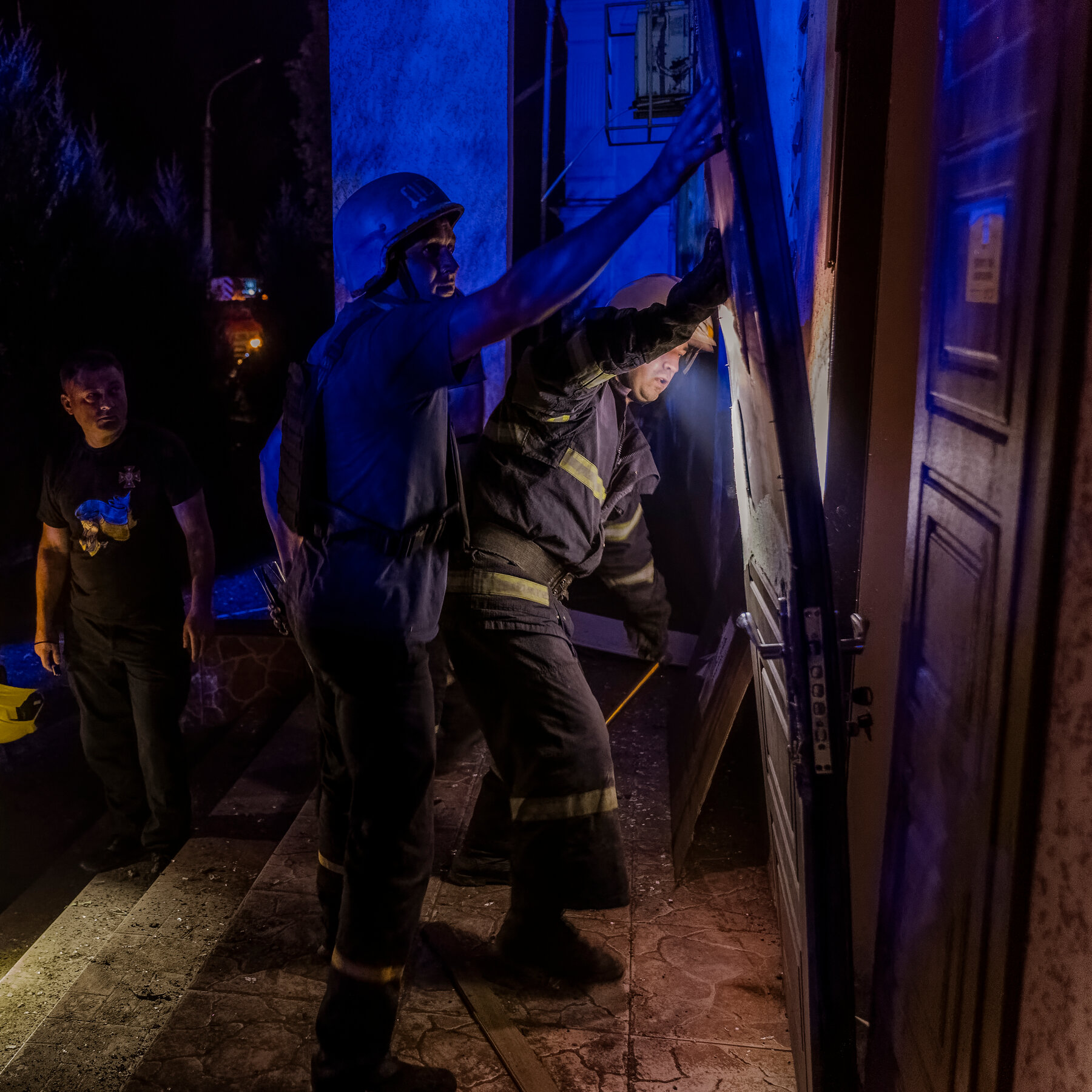
Daniel Berehulak for The New York Times
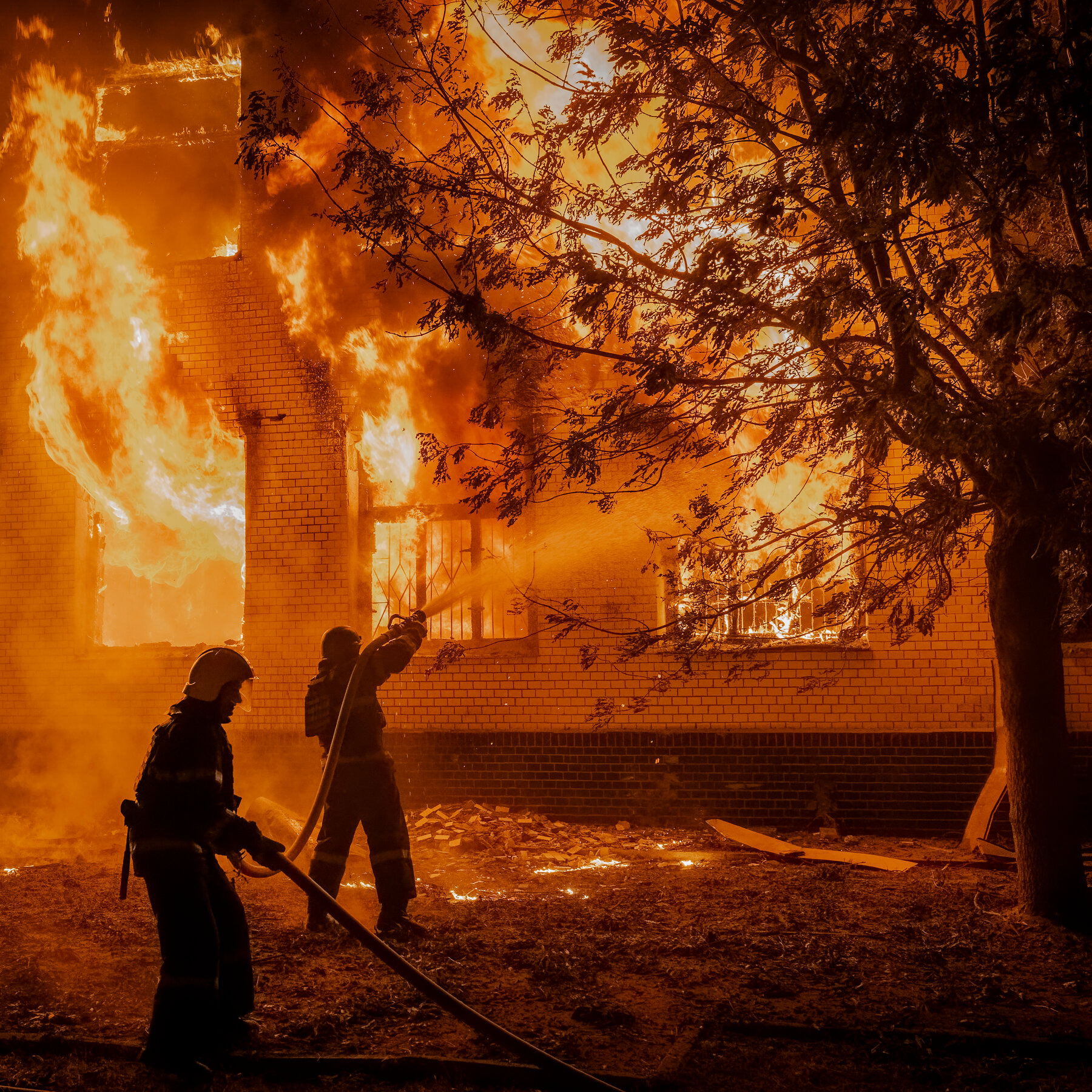
Daniel Berehulak for The New York Times
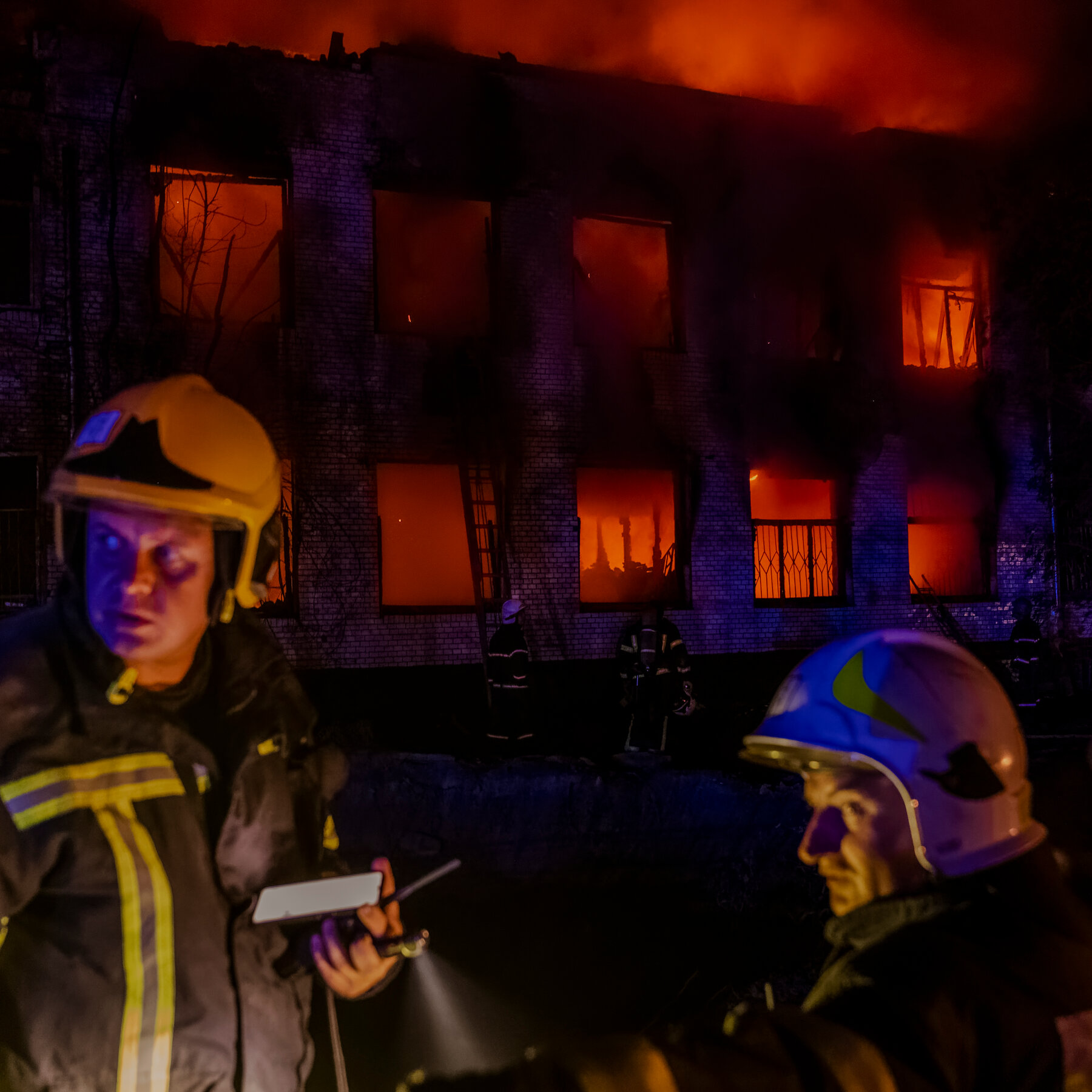
Daniel Berehulak for The New York Times
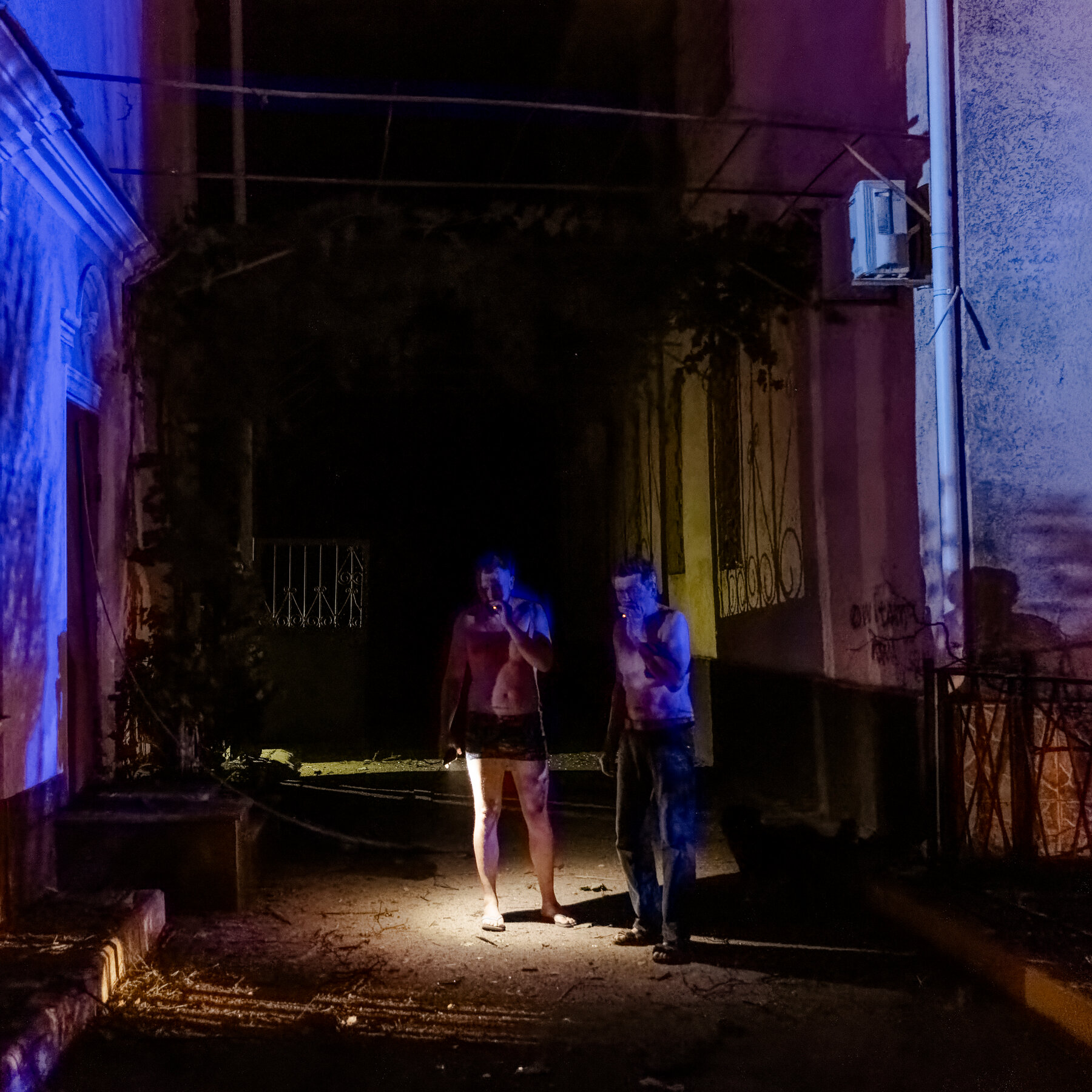
Daniel Berehulak for The New York Times
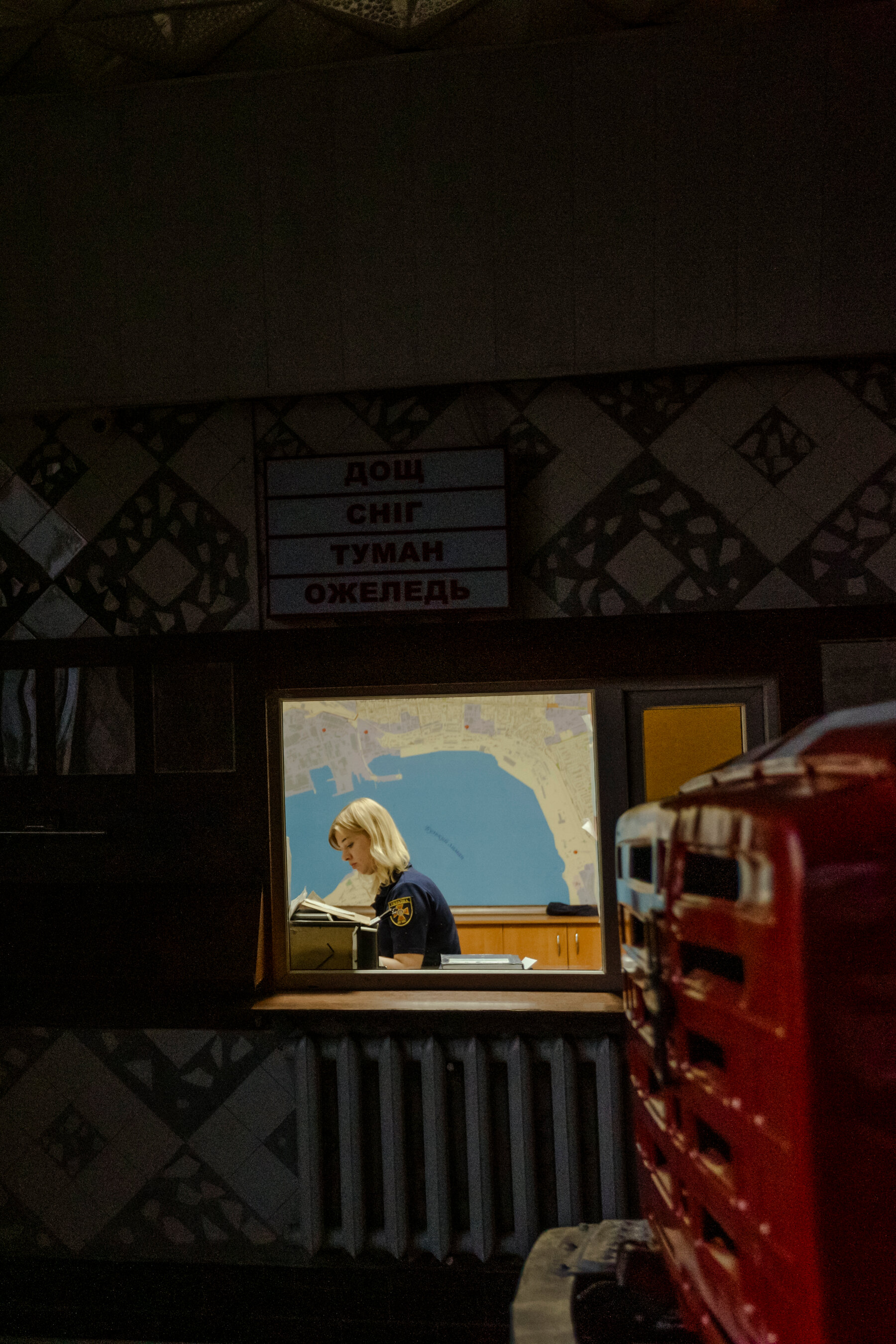
Daniel Berehulak for The New York Times
Anxious waiting, then the crash of rockets
At the fire station, the tension mounts as darkness falls. Most rocket attacks happen in the early morning hours, often between 2 and 6, but the first air attack alarms often sound much earlier, sending firefighters scrambling into a dank and fetid bunker beneath the firehouse.
“As soon as it gets dark my heart starts to beat faster,” Stas said.
They pass the long hours of the night in nervous anticipation. Sometimes they play dominos as a distraction or listen to President Volodymyr Zelenky’s nightly address on their phones. Stas watches reruns of Super Bowl games.
Before the war, he played American football because, he said, he thinks soccer is for wimps. He only ever wanted to be a soldier or a firefighter because saving lives, he said, “is the work of real men.” But he is not afraid to show his emotions. He cries, sometimes several times a day, tormented by the horrors he has witnessed over the last six months.
“You come home, and you try to fall asleep,” he says, “and you dream about it all in a cold sweat and wake up in tears.”
Then it begins. A steady thwomp, thwomp, thwomp of rocket strikes that seem to pierce the heart and loosen the contents of the stomach. With each strike every muscle of Stas’s 6-foot-3, 240-pound body seems to tense. The firefighters count the rocket strikes and wait, looking up as if to gauge for the hundredth time the structural integrity of the concrete ceiling.
When the call comes, though, all of the painful anxiety melts away. They rac up the stairs, out of their shelter and into the treacherous open air of the night. The vast cloud of the Milky Way offers nearly the only illumination until the blue lights of the fire engine switch on.
“These are the same kind of heroes as the soldiers,” Mr. Kim, the head of the Mykolaiv region’s military administration, said of the city’s firefighters. “They show up in five minutes under fire and start to work.”
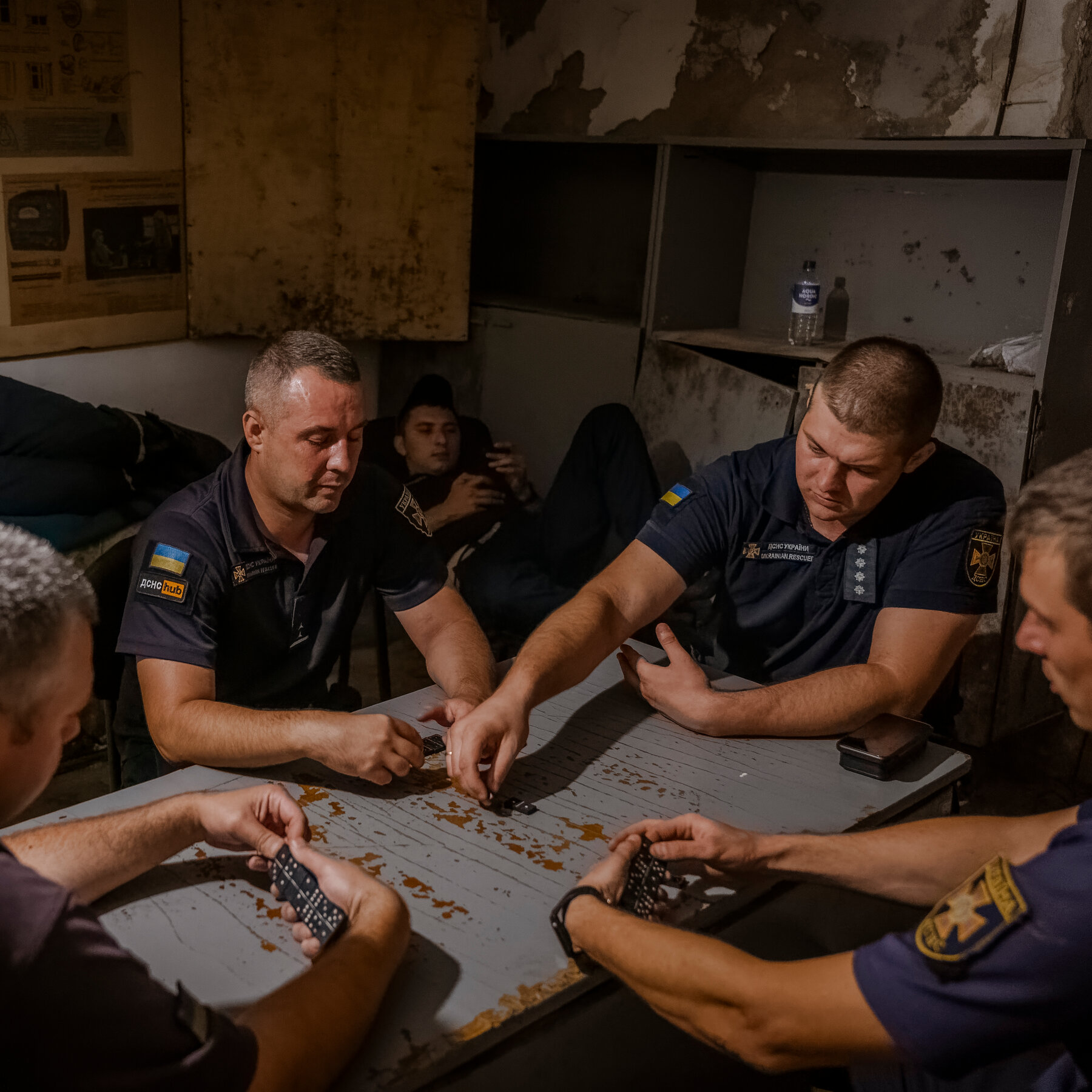
Firefighters playing dominos. Second from right is Stanislav Ustich
Daniel Berehulak for The New York Times

Daniel Berehulak for The New York Times
Dazed civilians, pulled from the rubble
How Russia selects its targets is a subject of debate and bewilderment in Mykolaiv. Rarely, it seems, do the Kremlin’s forces hit military targets, but they have destroyed plenty of schools, universities, hospitals and homes.
Since the start of the war on Feb. 24, more than 500 apartment buildings and roughly 700 homes have been damaged in rocket attacks on the city, many of them beyond repair, according to the city government. More than 130 civilians have been killed and hundreds more have been wounded.
Around the corner from the dermatology clinic, two rockets had slammed into a cluster of private homes, and firefighters had to pull dazed residents from the rubble. One, a young man named Andrei, covered in dust, pointed to a spot in the rubble he said used to be his bedroom. Another, Svetlana Kharlamova, pushed herself out of a window to escape when her roof caught fire. Firefighters later fetched some clothes and her cane from inside her damaged home.
“The main thing is that we’re alive,” she said.
One evening, a rocket hit so close to the fire station that most of the windows were blown out and the roof of the gym caved in. The firefighters were unharmed.
A strike on a Mykolaiv apartment building in late June sheared off most of the building’s top three floors, killing nine people, including two young women who had just graduated from college and a Red Cross volunteer. It was the third time a building on the block had been hit.
“It’s difficult when you talk to someone in the evening, and in the morning, you learn that they’re gone,” said Oksana Mushchinskaya, who continues to live on the first floor of the building with her two Yorkshire terriers.
“I think this is probably to scare us, so that we give up Mykolaiv,” Ms. Mushchinskaya said. “But they won’t succeed. Mykolaiv is Ukraine and it will remain Ukraine. Not one Russian will be allowed to enter here. Not one.”
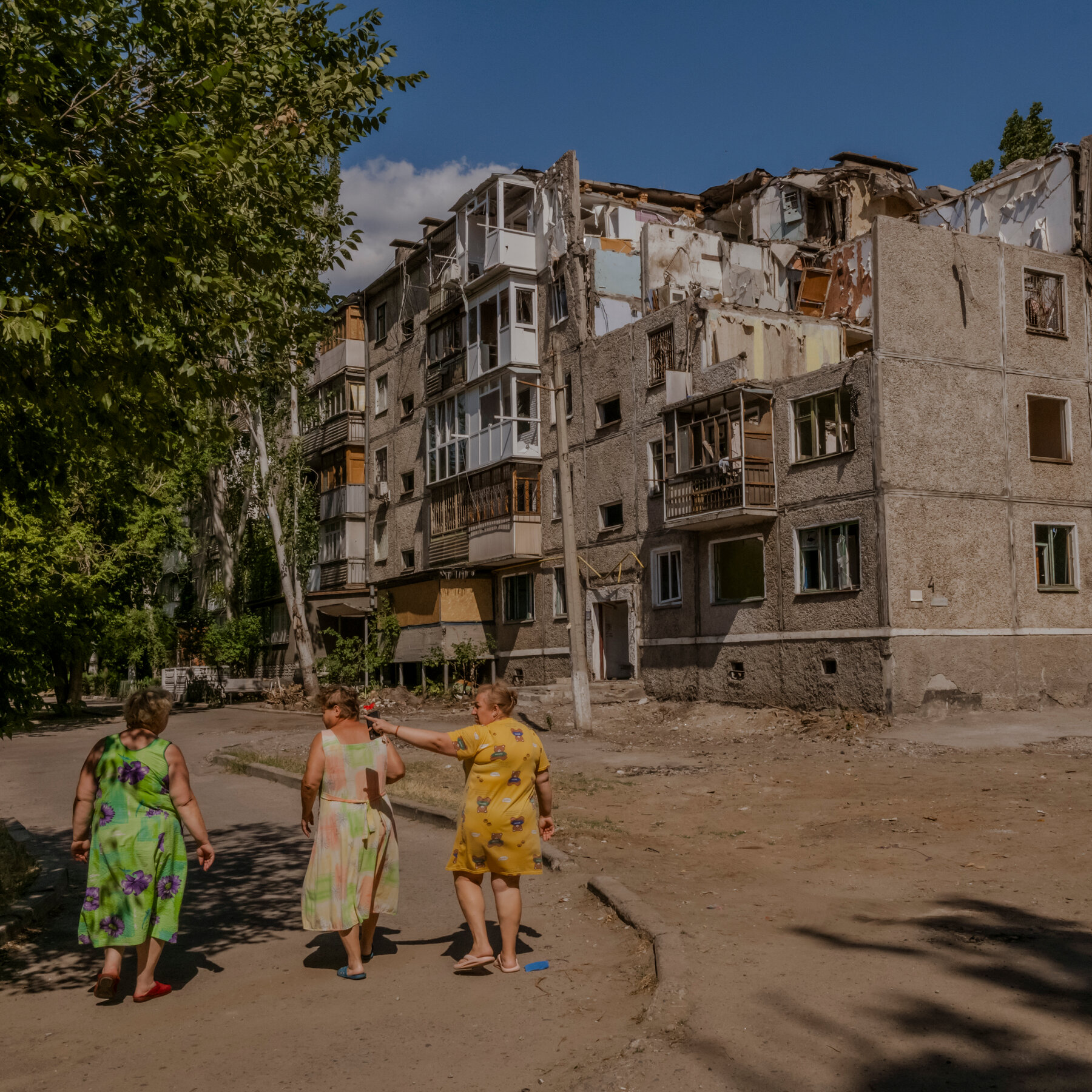
Daniel Berehulak for The New York Times
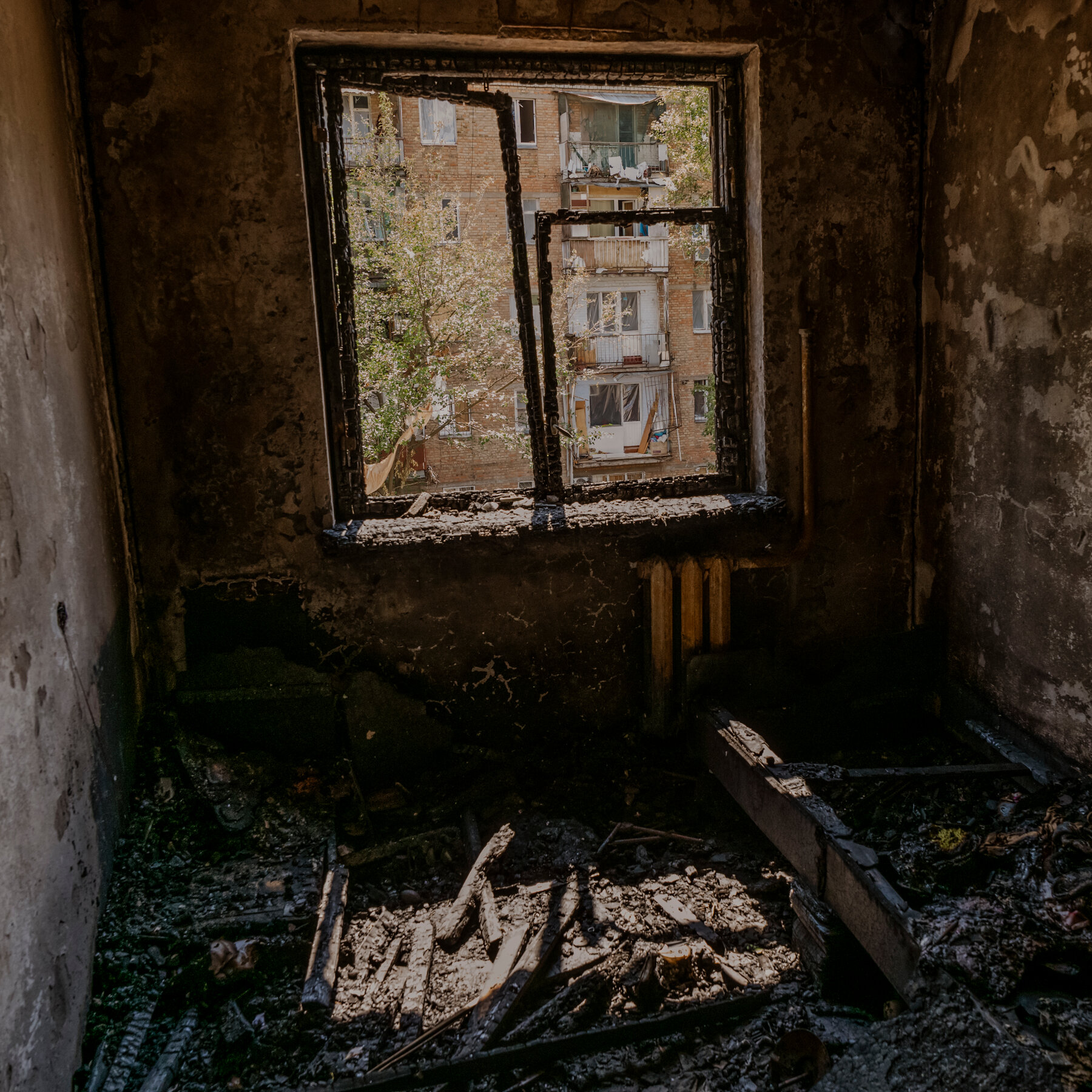
Daniel Berehulak for The New York Times
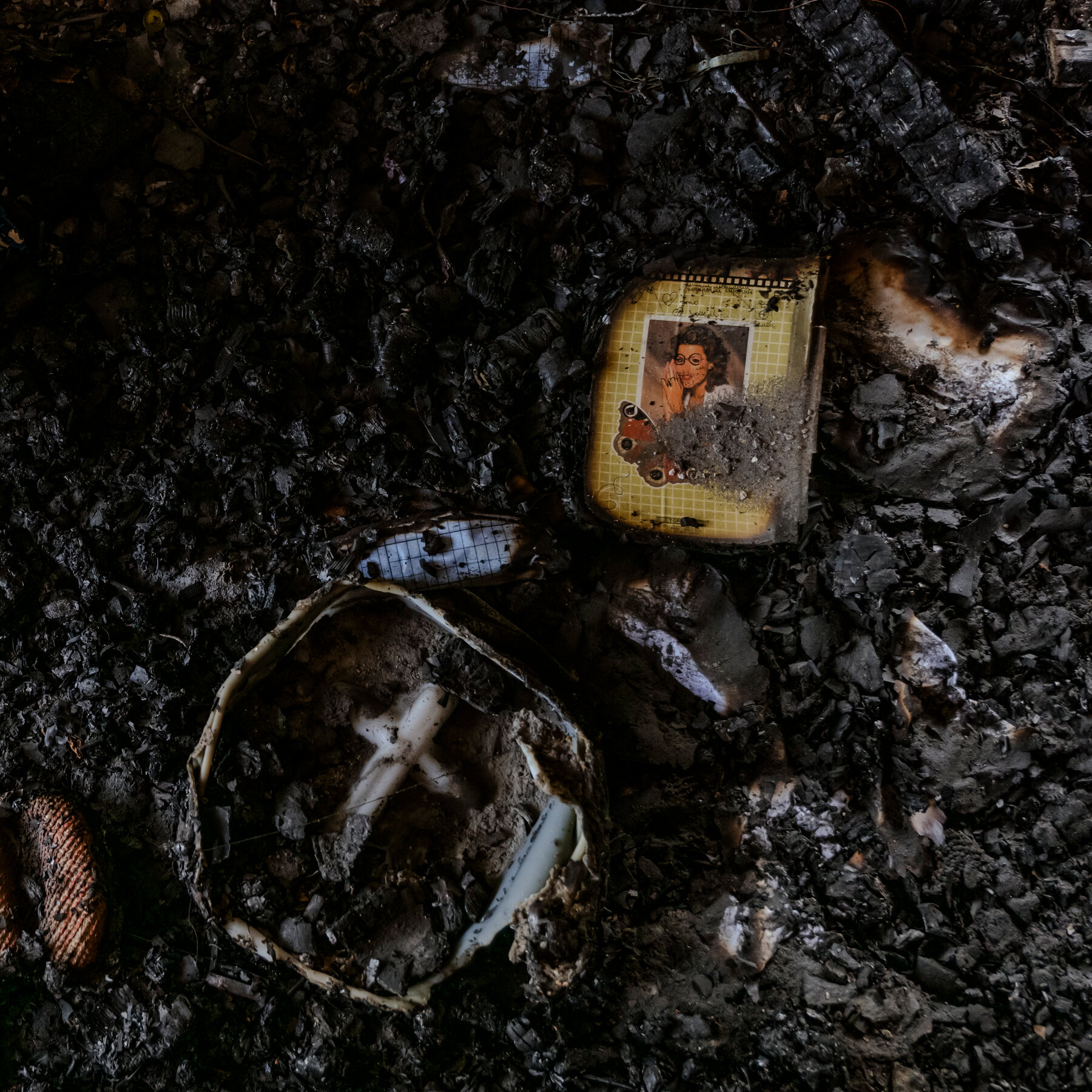
Daniel Berehulak for The New York Times
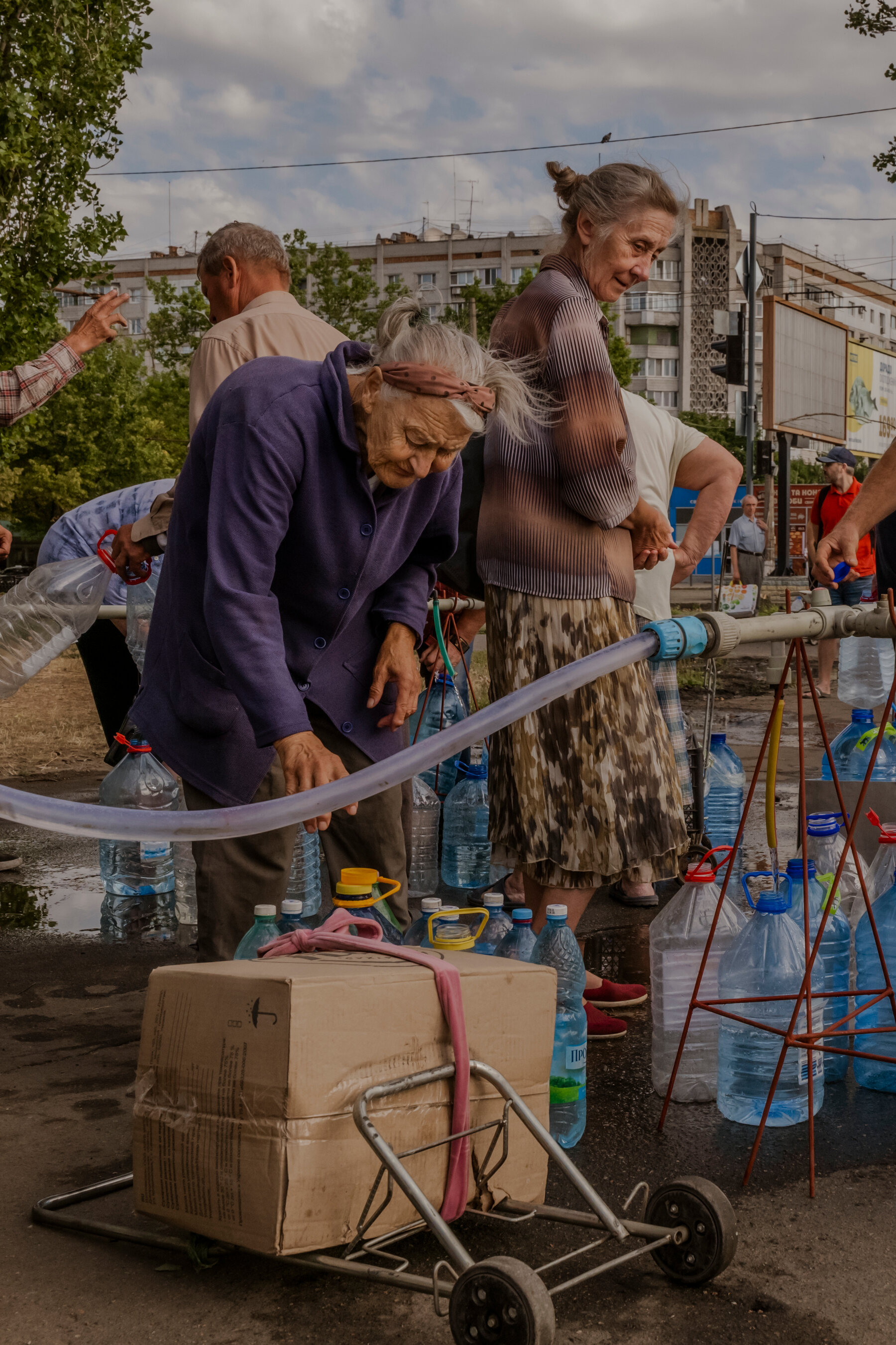
Daniel Berehulak for The New York Times
From the taps, only salt water
Even as the bombs fall, a semblance of normal life is evident on the streets of Mykolaiv. Some restaurants and cafes are open and department stores continue to do some business. On the ground floor of the Hotel Mykolaiv, Yekaterina Kondrachuk, 21, was boxing up products at the clothing boutique where she works. Days earlier, a rocket had slammed into the front of the hotel, taking out a chunk of the top few floors. But Ms. Kondrachuk was not leaving. She was merely moving the store to another location across the street.
“It’s frightening, of course,” she said. “But our family and our home are here.”
Perhaps the biggest hardship aside from the bombs is water. With Mykolaiv cut off from its main source of freshwater, it relies on makeshift wells that only provide salt water out of the tap. For drinking water, residents line up each day to fill up bottles at large tanker trucks parked around the city.
“We’re staying strong,” said Tatyana Lukyanova, 63, as she waited in line to fill plastic jugs with water. “It’s a little scary, but we’re carrying on.”
Just coming outside, though, is a gamble. Not far from where Ms. Lukyanova stood, a rocket struck near a bus stop at a busy intersection in the middle of the day, killing at least seven people and injuring nearly 20, according to the city government.
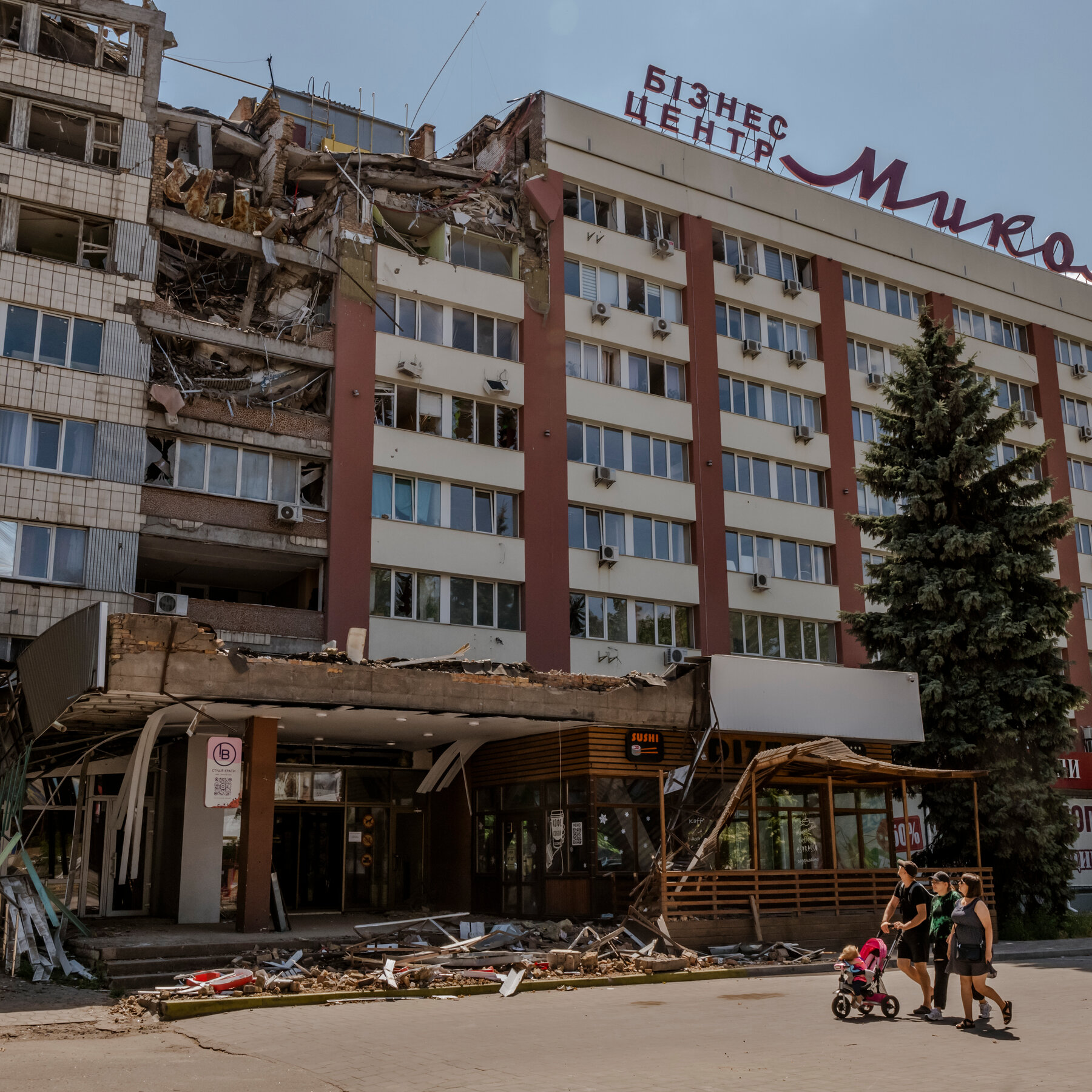
Daniel Berehulak for The New York Times
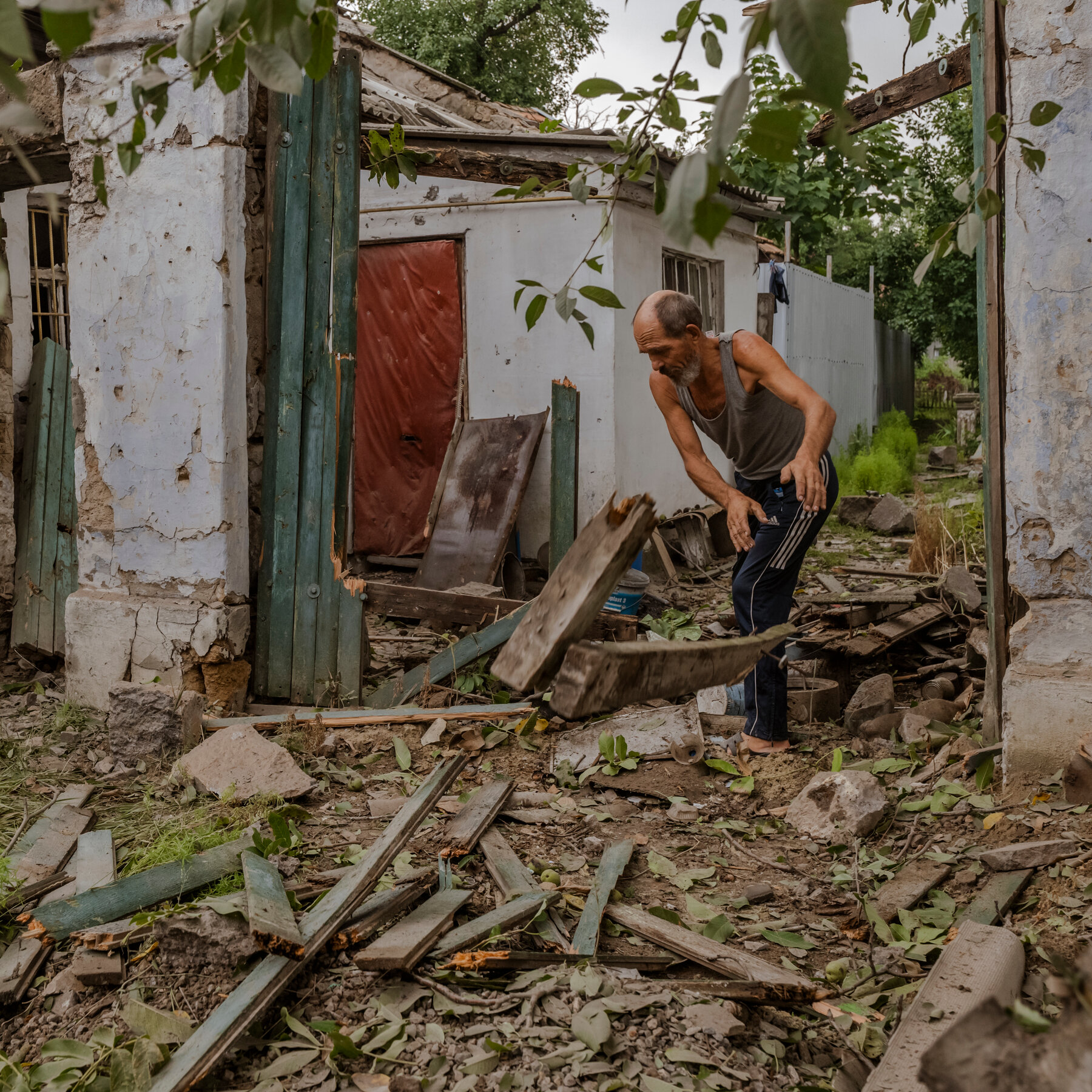
Daniel Berehulak for The New York Times
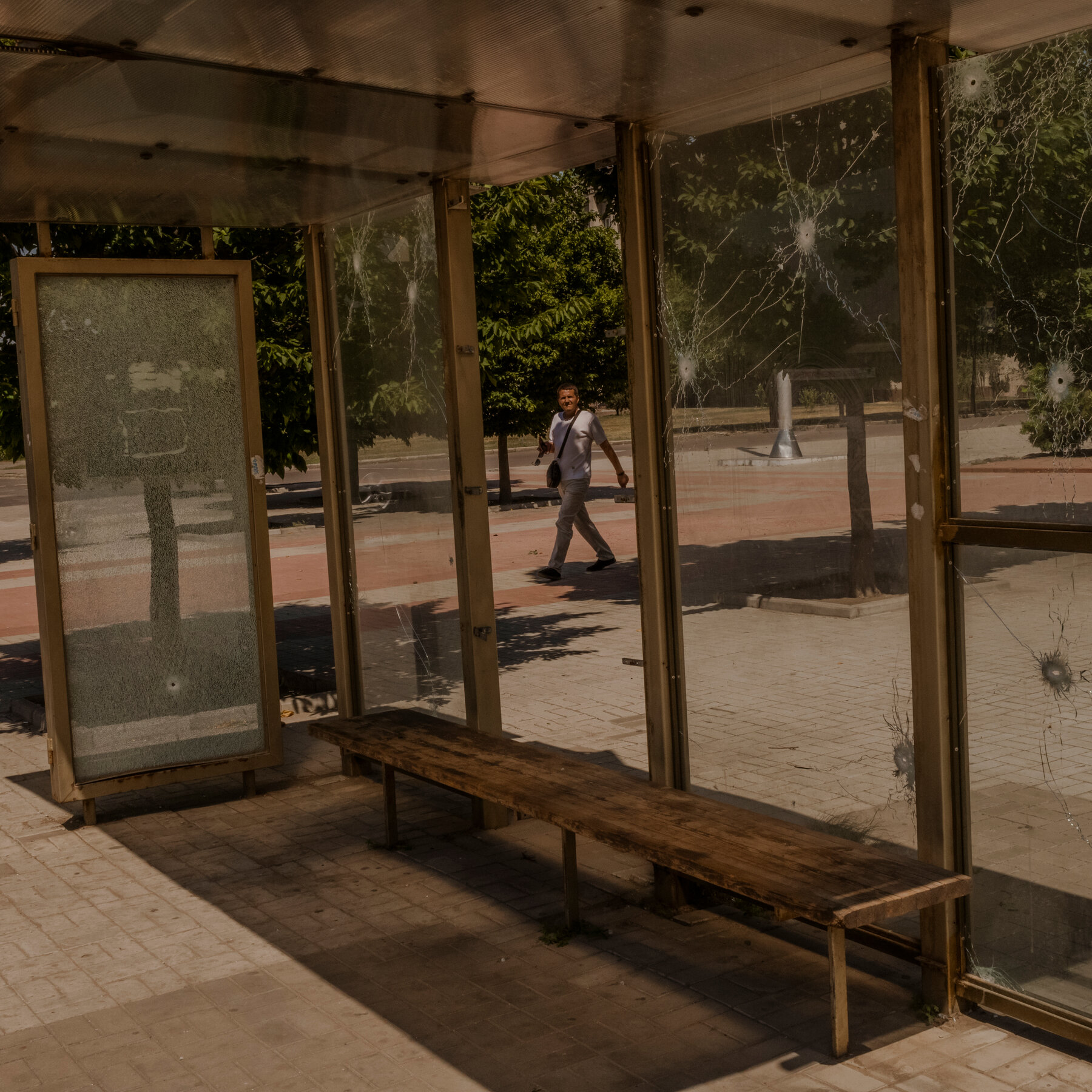
Daniel Berehulak for The New York Times
Outside the city, a ‘fight for position’
Ten miles from central Mykolaiv, the battle is raging in earnest, and in the silence of the night you can hear the booms of artillery exchanged between Ukrainian troops and their Russian adversaries.
While life continues to hobble along in Mykolaiv, the villages along the front lines are mostly abandoned, save for a handful of families who rarely leave their bunkers.
At the start of the war, Russian troops reached the Mykolaiv city limits, but were pushed back by fierce Ukrainian resistance. Now, in trenches cut through village courtyards and wheat fields, Ukrainian soldiers hold the line, making sure that the nearby Russian troops move no farther west.
“It’s now a fight for position,” said Senior Lt. Sergei Savchenko, whose unit with Ukraine’s 28th Brigade is dug in along the border with the Kherson region, the Russian-controlled territory west of Mykolaiv. “We’re not letting them move, though they are trying to.”
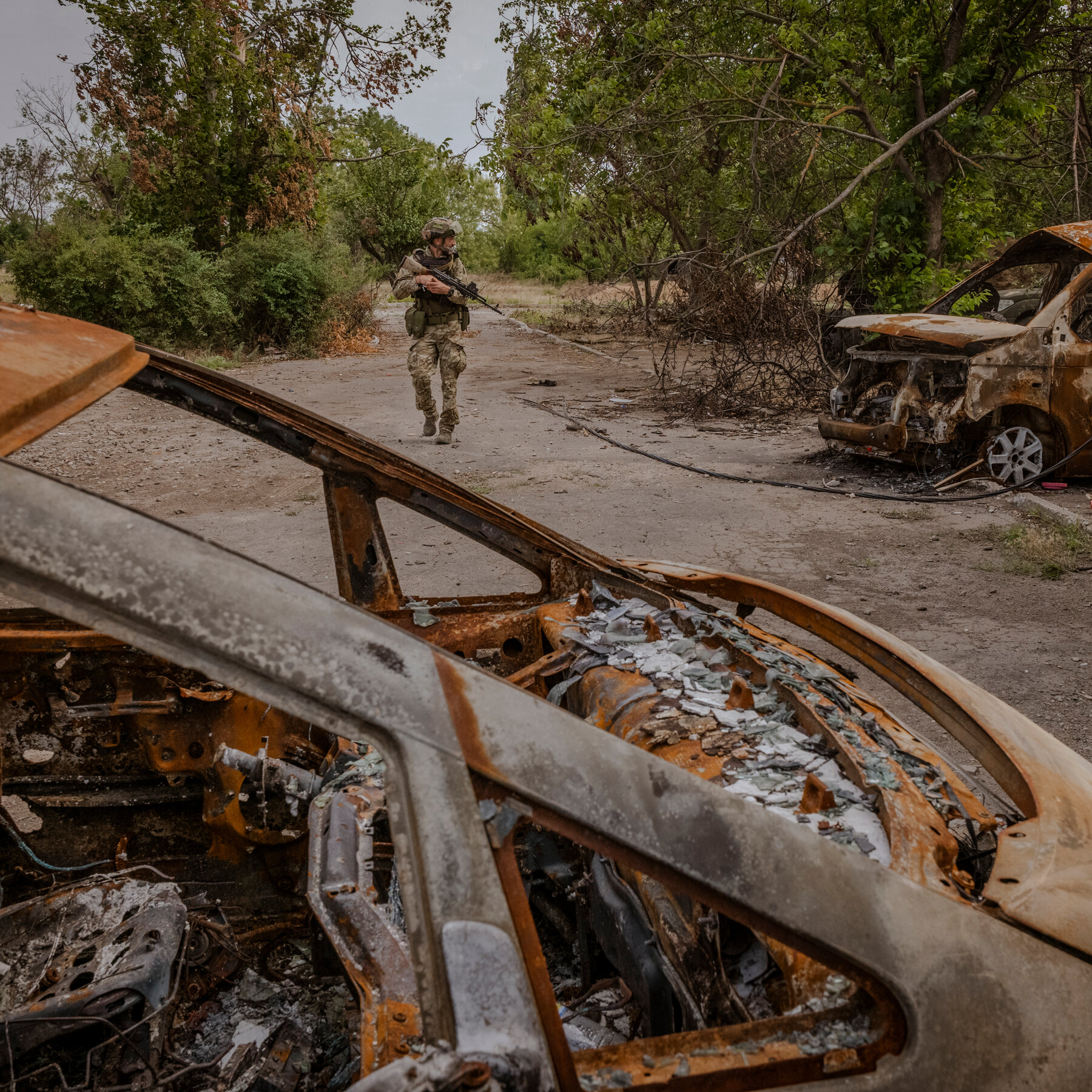
Daniel Berehulak for The New York Times
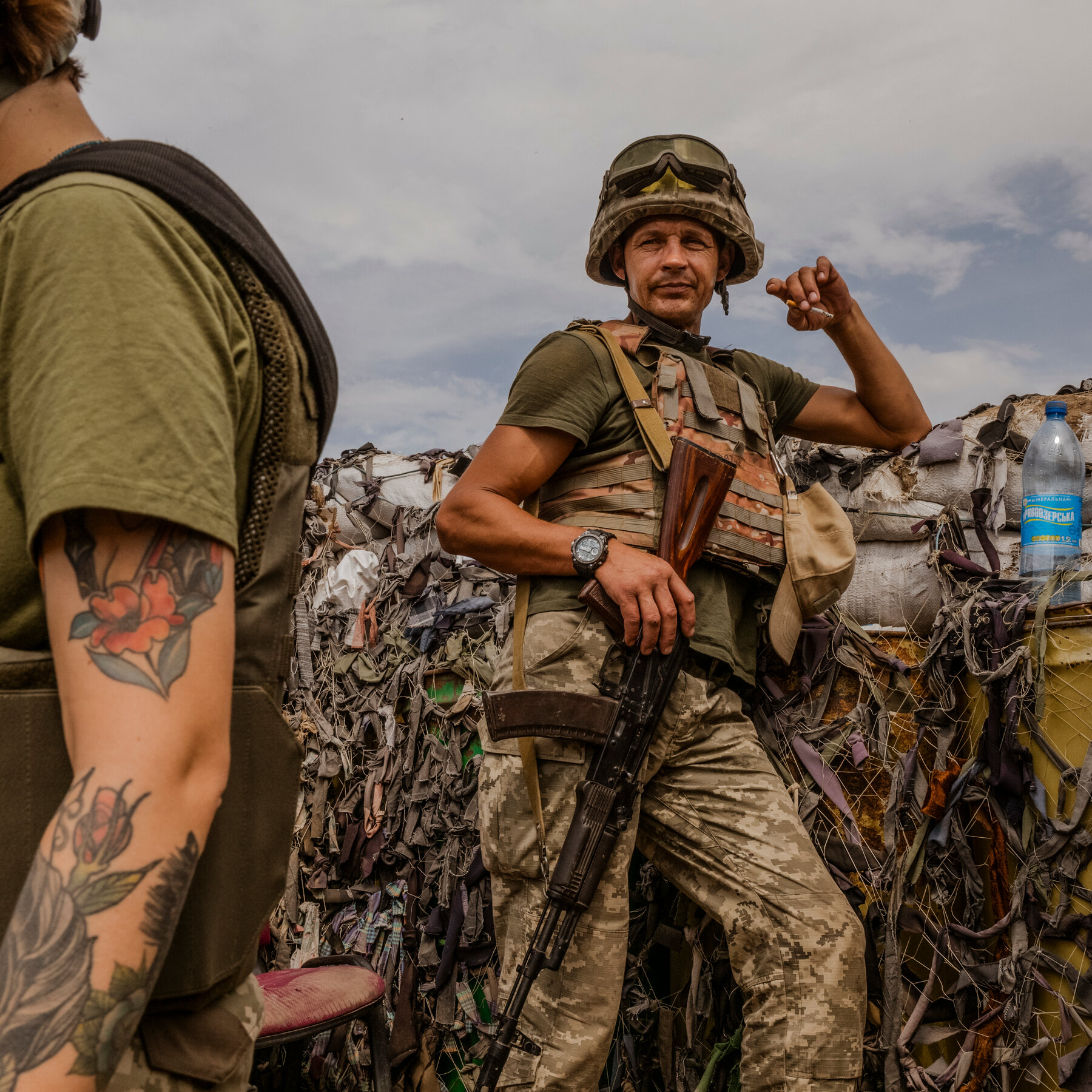
Daniel Berehulak for The New York Times
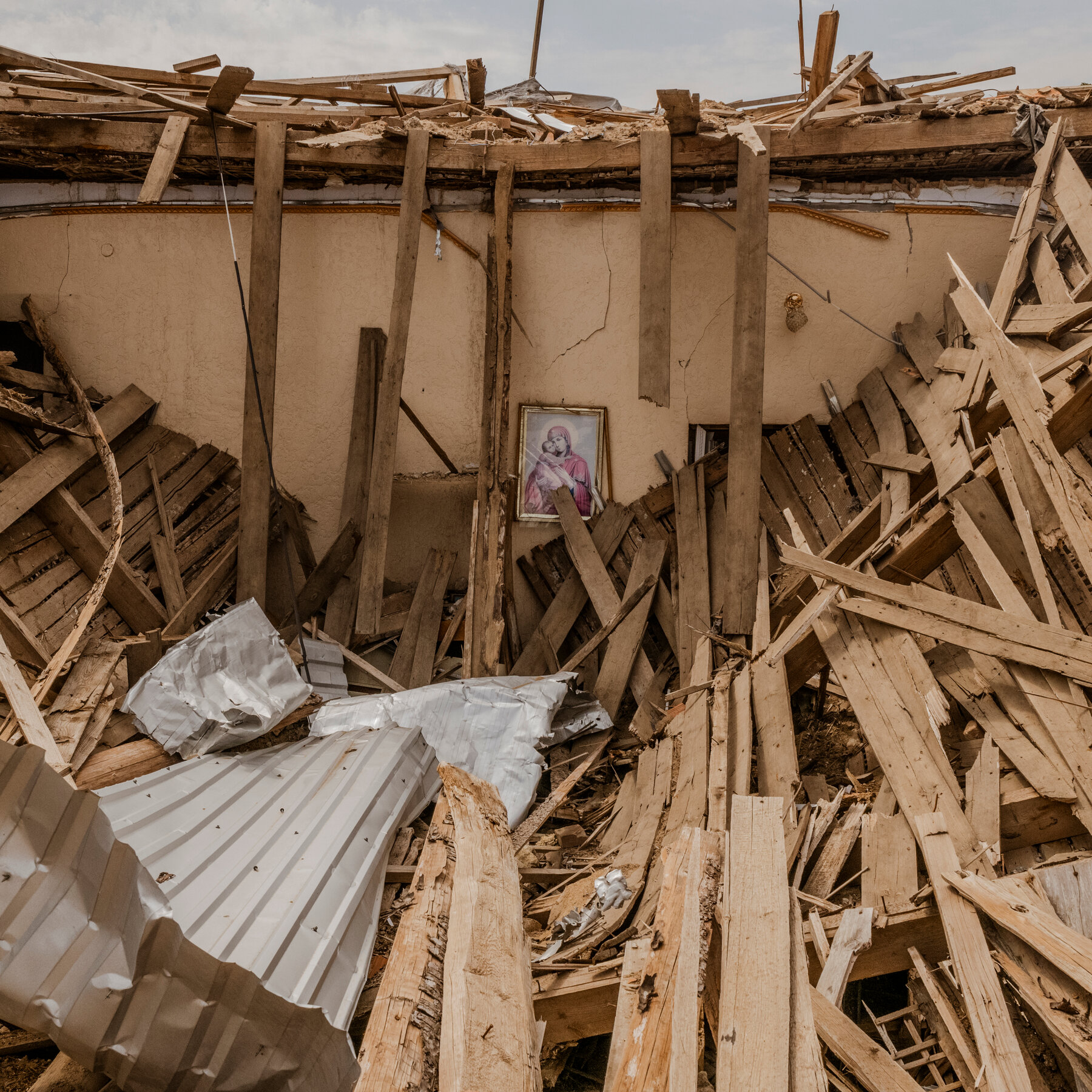
Daniel Berehulak for The New York Times
At the school, splintered pictures of children
Before dawn on the morning of July 28, two Russian rockets slammed into Mykolaiv Gymnasium No. 49, a primary school in a hard-hit neighborhood in the city’s southern end. One rocket smashed directly through the school’s front door leaving only splintered beams. Framed class pictures of children with toothy grins littered the floor, though some still clung to cracked plaster walls.
Since the start of the war, Russian forces have attacked around 50 educational institutions in Mykolaiv, according to the mayor’s office. Though Ukrainian troops have at times deployed in schools, mainly as a place to rest from the fighting, there was no evidence of any military presence in any of the attack sites visited by New York Times reporters. Some have speculated that the attacks could be directed at what the educational institutions represent: Ukrainian thought, culture and language.
“Тhey are just targeting universities,” said Leonid Klimenko, standing in the wreckage of the Petro Mohyla Black Sea National University in central Mykolaiv, where he is rector. “There have never been any soldiers here.”
On Aug. 17, two rockets punched a hole through the university’s heavy brick facade, gutting offices and classrooms. The rockets failed, however, to take out the Ukrainian flag waving in front.
“It’s nothing,” Dr. Klimenko said. “We’ll rebuild.”
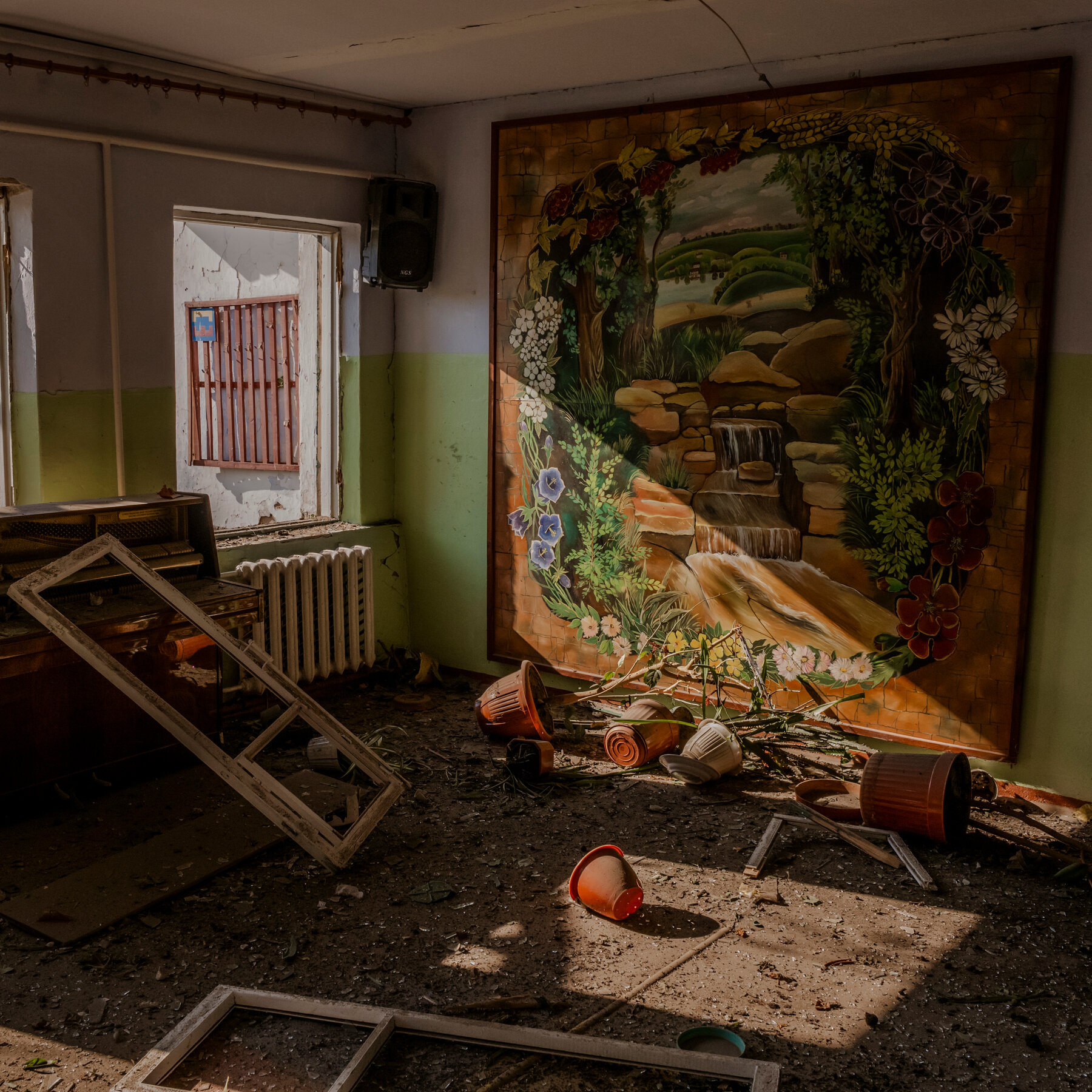
Daniel Berehulak for The New York Times
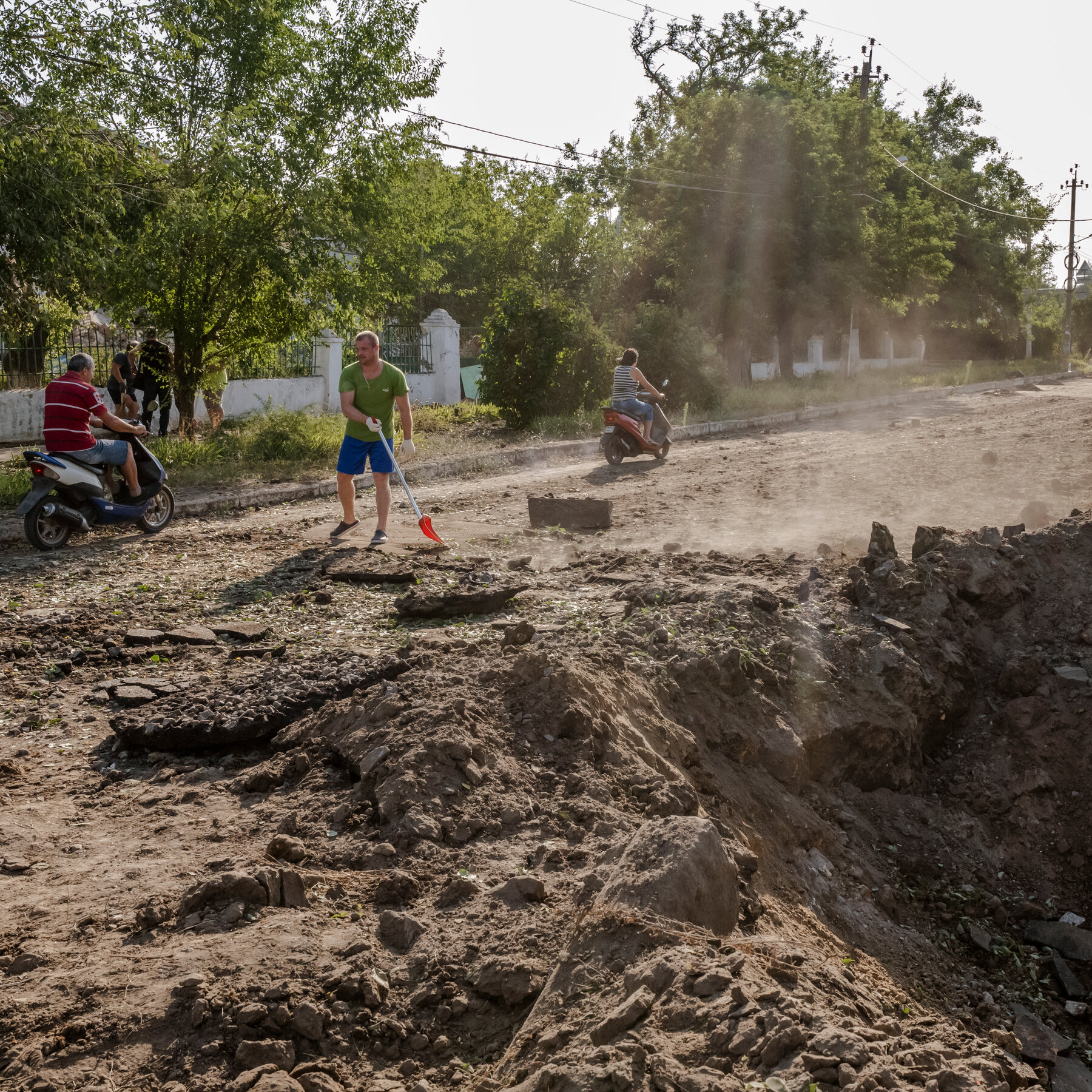
Daniel Berehulak for The New York Times
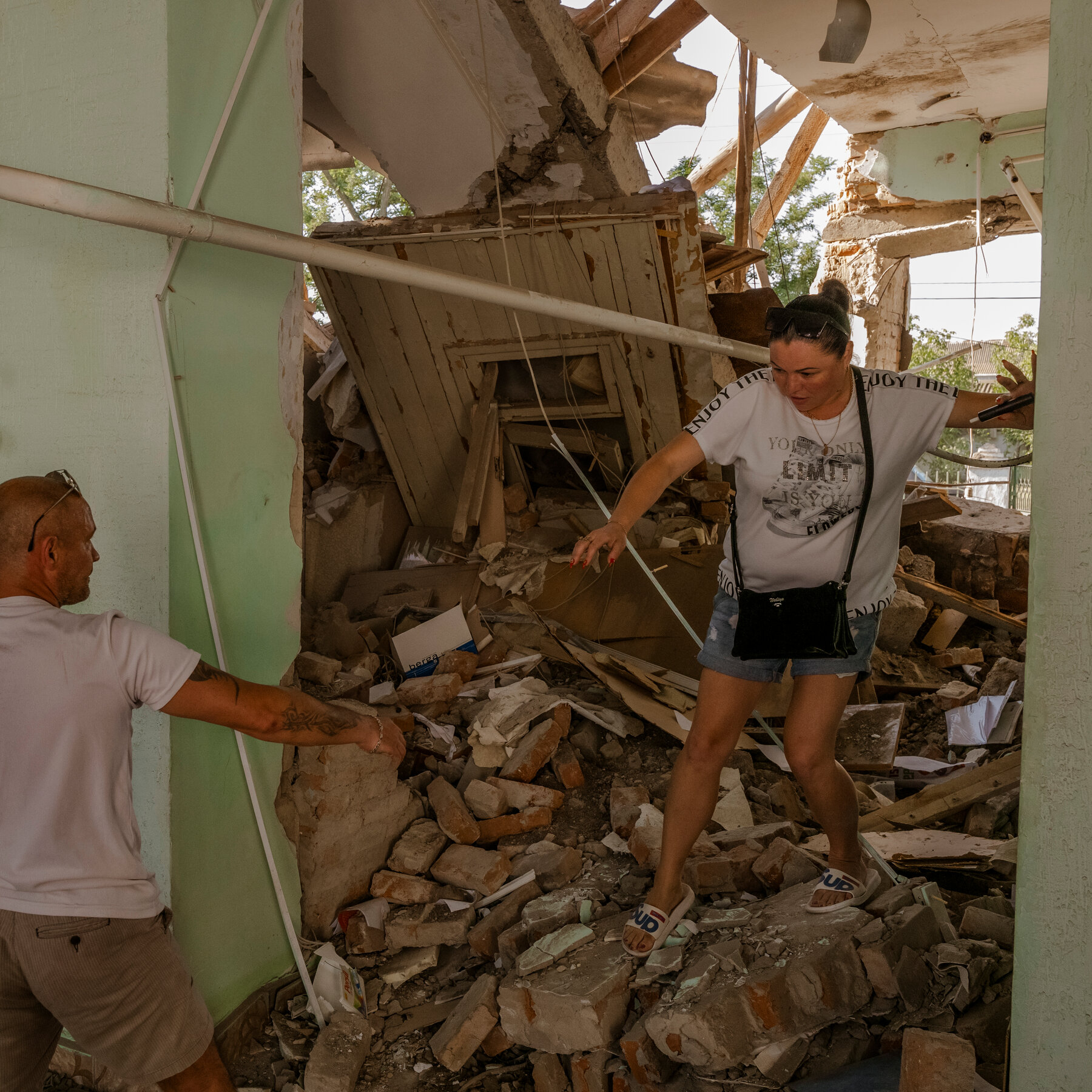
Daniel Berehulak for The New York Times
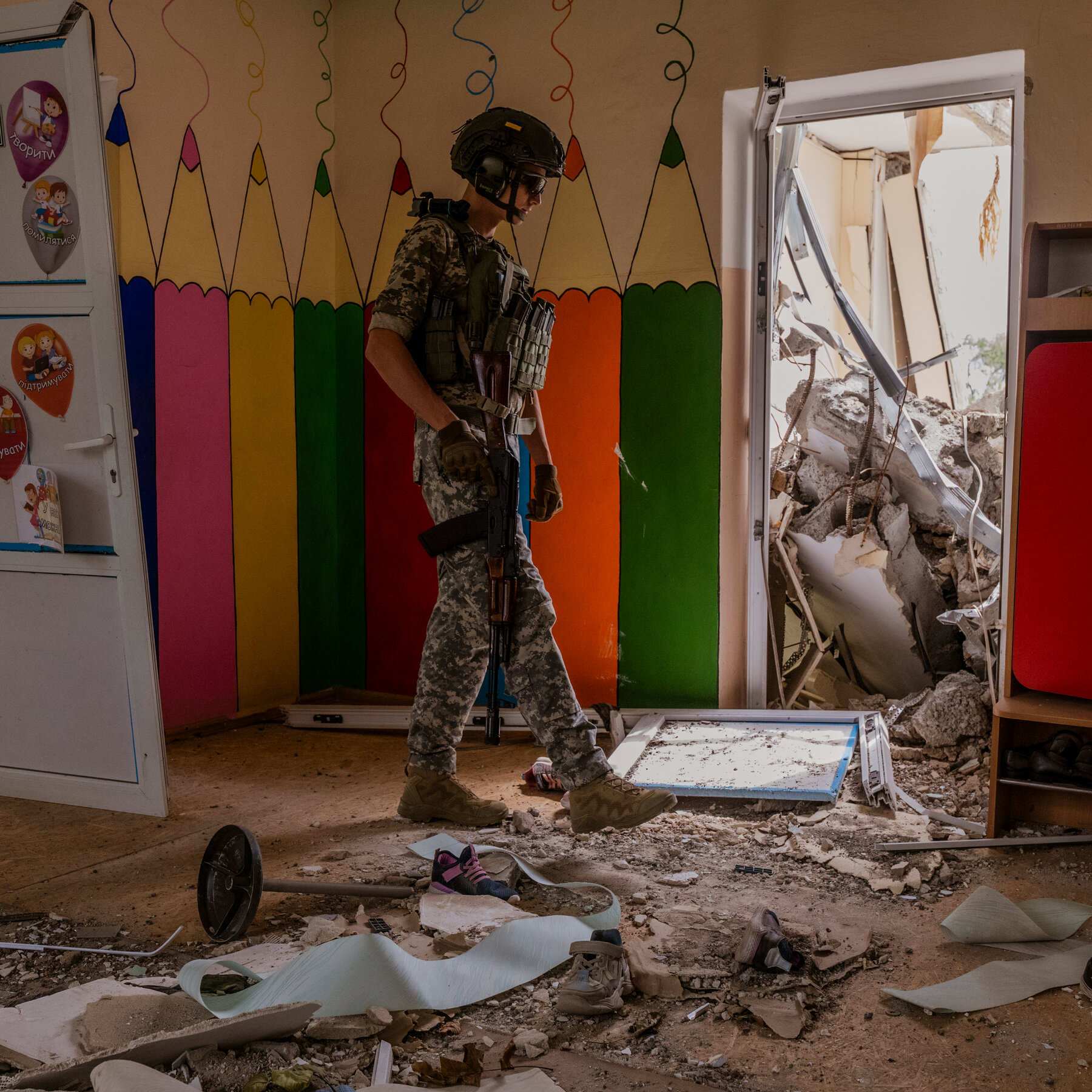
Daniel Berehulak for The New York Times
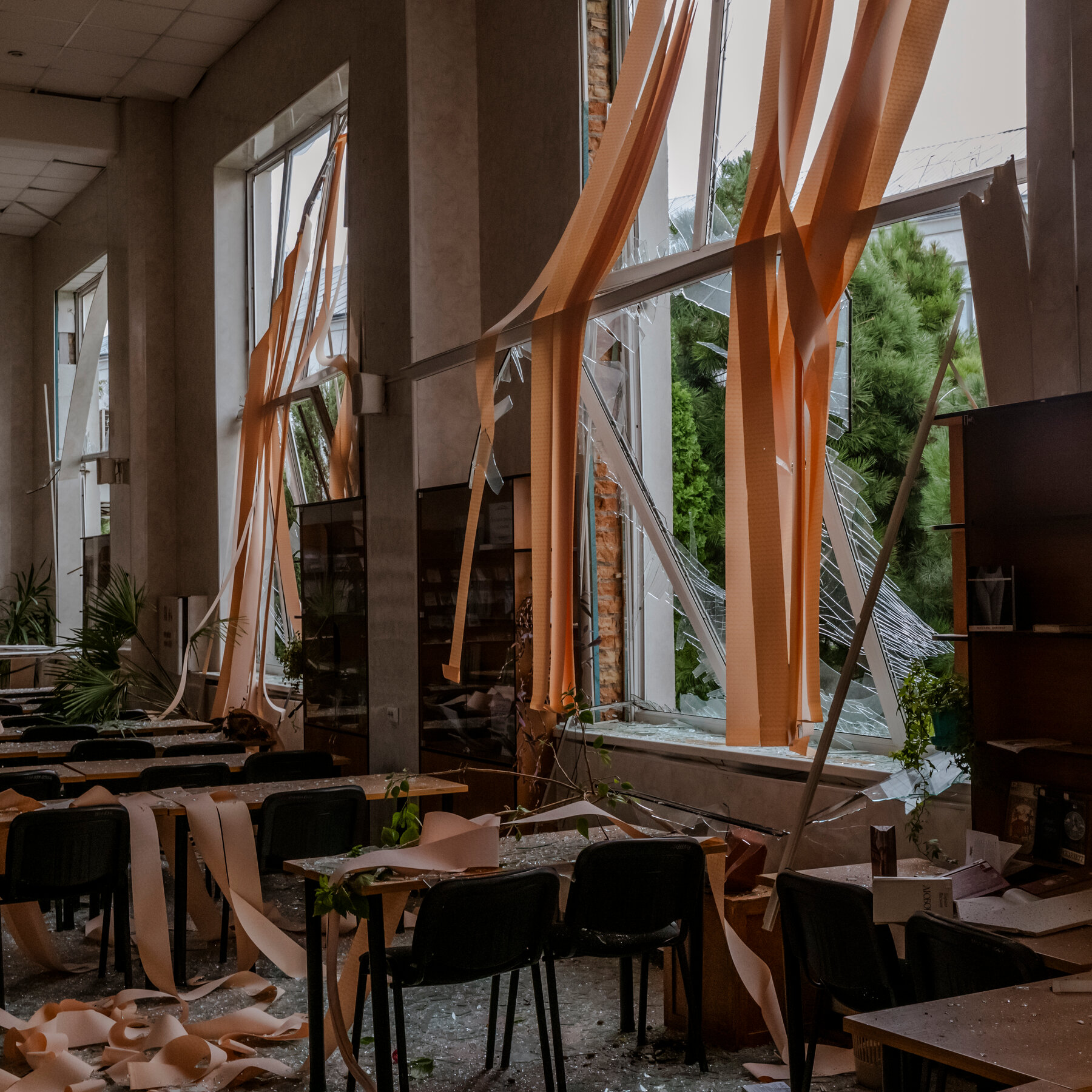
Daniel Berehulak for The New York Times
Intense blazes rip through wheat fields
The red fire truck careened through wheat fields on the outskirts of Mykolaiv toward a column of smoke so thick and black that at times it obscured the blazing summer sun. On the scene, firefighters tried to beat back the flames, but the heat was too intense.
After the fire had burned itself out, the culprit was discovered: remnants of a Russian rocket, including the nose cone and engine, lay on the black scorched earth, as a flock of storks scoured the ground for newly uncovered insects.
“The fields burn every day,” said Sergei Serdega, a deputy fire chief.
Whether Russian forces are intentionally shelling fields to destroy Ukraine’s crops is unclear, but hundreds of acres have burned since the growing season began in spring. Though the attacks rarely cause casualties, it is particularly dangerous work for firefighters who have to be mindful of unexploded ordnance and mines.

Daniel Berehulak for The New York Times

Daniel Berehulak for The New York Times

Daniel Berehulak for The New York Times
For Stas, the worst day of the war came in March, when Russian forces staged a rocket attack on the headquarters of the 36th Ukrainian Naval Infantry Brigade, flattening the barracks where hundreds of soldiers were sleeping.
Officially, some 50 marine infantry troops were killed, but Stas and others said that the real toll was probably in the hundreds.
“There were just pieces of meat,” Stas said. “There’s a head. There’s a body. Below that there should be legs, but the legs are wrapped around the head.”
There was no evidence of any military presence at the dermatology clinic hit on Aug. 1. A man dressed only in underwear and a T-shirt with a picture of a Turkish-made Bayraktar drone on it, told the firefighters that the clinic was used as a site for handing out humanitarian aid like food rations and medicines. He and his wife appeared to be the only people on the premises when the rocket hit, though they escaped with only minor injuries.
It took more than four hours to put out the fire and it was light outside by the time the flames were extinguished. A woman wearing a white lab coat arrived at about 6 a.m. to start her workday. Standing in front of the smoldering ruins, she let out a whistle and cursed.
Stas and his fellow firefighters were panting, dripping with sweat.
“I wouldn’t mind just a few days of quiet,” Stas said. “Really, just two days to sleep soundly without waking up to these explosions.”
He is still waiting.
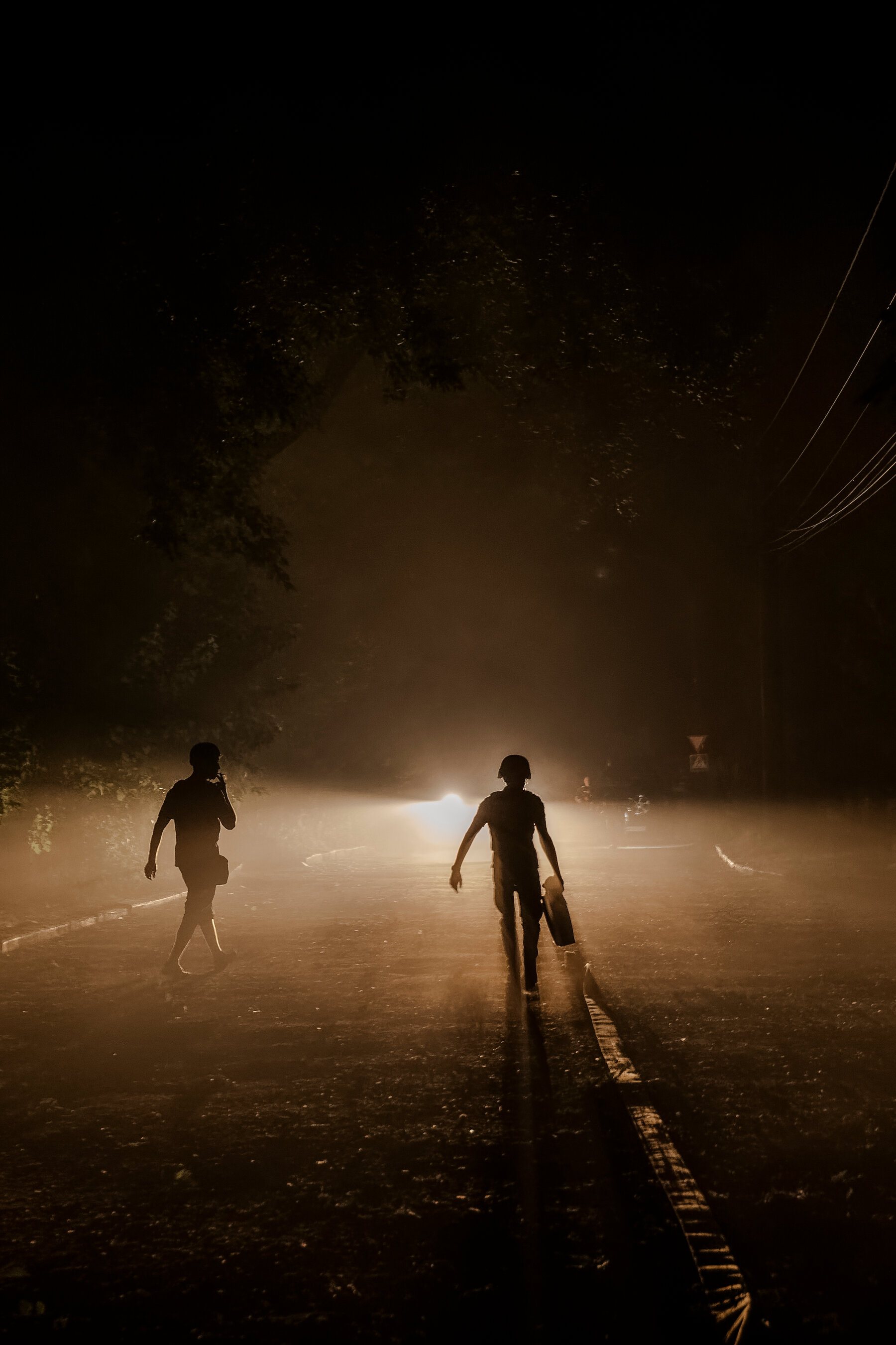
Daniel Berehulak for The New York Times
